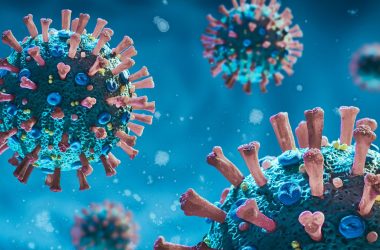Health
Smokers are less likely to develop Parkinson’s. Why?
Researchers test theory explaining medical mystery and identify potential new treatment
Paradoxically, previous research has shown that despite its inherent health risks, cigarette smoking is linked with a reduced risk of Parkinson’s disease. Until now, however, it was not clear how.
New research in lab models indicates that low doses of carbon monoxide — comparable to that experienced by smokers — protected against neurodegeneration and prevented the accumulation of a key Parkinson’s-associated protein in the brain.
The findings are published in npj Parkinson’s Disease by investigators at Massachusetts General Hospital.
“Because smoking has consistently been associated with a reduced risk of Parkinson’s disease, we wondered whether factors in cigarette smoke may confer neuroprotection,” said senior author Stephen Gomperts, an attending physician at Massachusetts General Hospital and an associate professor of neurology at Harvard Medical School.
“We considered carbon monoxide in part because it is generated endogenously in response to stress and has been shown to have protective properties at low levels. Also, overexpression of heme oxygenase-1, a stress-induced enzyme that produces endogenous carbon monoxide, has been found to protect dopaminergic neurons from neurotoxicity in an animal model of Parkinson’s.” In addition, nicotine, a major constituent of cigarette smoke, has been found to be ineffective at slowing the disease’s progression in a recently reported clinical trial.
“Molecular pathways activated by low-dose carbon monoxide may slow the onset and limit the pathology in Parkinson’s disease.”
These findings led Gomperts and his colleagues to test the effects of low doses of carbon monoxide in rodent models of Parkinson’s.
They administered a low dose of carbon monoxide (comparable to the exposure experienced by people who smoke) in the form of an oral drug product provided by Hillhurst Biopharmaceuticals, and found it protected the rodents against hallmark features of the disease, including the loss of dopaminergic neurons and the accumulation of the Parkinson’s-associated protein alpha-synuclein in neurons. Mechanistically, low-dose carbon monoxide activated signaling pathways that limit oxidative stress and degrade alpha-synuclein.
The team also found that heme oxygenase-1 was higher in the cerebrospinal fluid of people who smoke compared with nonsmokers. And in brain tissue samples from patients with Parkinson’s, heme oxygenase-1 levels were higher in neurons that were free of alpha-synuclein pathology.
“These findings suggest that molecular pathways activated by low-dose carbon monoxide may slow the onset and limit the pathology in Parkinson’s disease. They support further investigation into low-dose carbon monoxide and the pathways it modifies to slow disease progression,” said Gomperts. “Building on multiple Phase 1 and Phase 2 clinical studies in both healthy people and people with a variety of clinical conditions showing safety of carbon monoxide at the low doses studied here, a clinical trial of low-dose, orally administered carbon monoxide in patients with Parkinson’s disease is planned.”
Disclosures: There are relevant COI disclosures. Disclosure forms provided by the authors are available with the full text of this article. Gomperts’ brother is CEO of Hillhurst Biopharmaceuticals.
Funding: This work was supported by the Farmer Family Foundation Parkinson’s Research Initiative, Michael J. Fox Foundation, National Institutes of Health, and the Challenger Foundation, with in-kind support from Hillhurst Biopharmaceuticals Inc.





